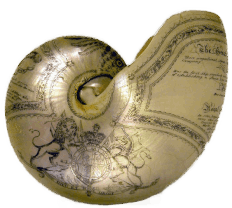Location: the historic Silk Mill, Whitchurch, Hampshire, RG28 7AL, UK.
 Cost:
Cost: Pinned insect conservation course: £250.
N.B. If you book this pinned insects conservation course plus the three-day course on the conservation of taxidermy (which costs £300) the combined total would be just £500 (saving you £50).
Grant-aid can be sought from your local regional museums service for up to £500.
For south-east UK see: www.southeastmuseums.org
Training delivered by: Simon Moore. Simon Moore MIScT, FLS, RScI, ACR, Conservator of Natural Sciences.
Contact: email couteaufin@btinternet.com or call 07900 36 8757.
Directions and accommodation: See suggestions at the bottom of this page.
Course details: Pinned Insects conservation.
 You are advised to bring a lab-coat (if possible), dissection tools and a close-up visor as much of the work is delicate and requires magnification. Cheap but good visors are those made by Rolson and can be found for about £10-£20. This equipment is not essential to bring and some will be provided but I will not have enough for everyone. I will also have one or two visors for sale.
You are advised to bring a lab-coat (if possible), dissection tools and a close-up visor as much of the work is delicate and requires magnification. Cheap but good visors are those made by Rolson and can be found for about £10-£20. This equipment is not essential to bring and some will be provided but I will not have enough for everyone. I will also have one or two visors for sale.
Day 1: 09.30 start. Self-introductions, local logistics, fire-exits, risks, allergies (please advise Simon Moore prior to course), loos and house Health & Safety rules.
Power-point of course outlines, problems etc this will outline the course, some of the problems you are likely to encounter.
Introduction to projects the idea is that each student should tackle as wide as possible the different techniques involved rather than just settle on one particular specimen/problem.
Look at pest damage as this is the most usual (pests are also shown during the PowerPoint presentation but only relating to Entomology Collections).
Other deteriorative mechanisms: humidity giving rise to mould growth and Verdigris crystal formation, temperature fluctuation will also be mentioned, along with fading. How to manage these problems (preventive conservation) and remedy the resultant damage.
Practical course starts: Selection of specimens. Examination of specimens for conservation look for pest detritus and identify.
Reparation of bodies usage of Styrofoam cups, correct adhesive/s.
Gap-filling / consolidation of hollowed out bodies/ body scutes using Japanese tissues.
Reparation of wing crease, tears, missing (eaten) strips of wing tissue using recycled wings and Gampi tissue. Understanding the physical properties and use of Gampi tissue. Attachment of detached legs and wings.
Dealing with various fungal moulds.
13.00 - 14.00. Lunch (not provided but use local facilities, shops).
How to make prosthetics for missing appendages (Demonstration and practical). Restorative painting in gap-fills of Gampi tissue and texturing them so that these are less visible (restoration technology for display specimens.)
- 17.00
Day 2. 09.00 start. Check on previous days work, write-up reports, notes.
Other and related problems pin deterioration: rusted or copper-cored giving rise to Verdigris crystals? Removal of crystal and future prevention by removal of specimens from deteriorated pins using controlled heat source.
Introduction to antennal attachment, antennal repair, filling gaps in wings and painting in if restoration required, correct tools reminder.
Tackle new problems not yet worked on, gain as much experience while time (and specimens) allow.
13.00 14.00 Lunch (as before).
Finishing of practical work and projects, then group photo
- 16.30 17.00: Packing up & Depart
Contract: If you wish to attend the pinned insect conservation course, you will need to sign below and return to Simon Moore as a jpg photo by e-mail.
Once attendance has been confirmed by e-mail, one third of the course fee will be payable in the event of a no-show or late cancellation. Notice of cancellation can only be accepted 2 weeks prior to the commencement of the course. If a pro-forma invoice is required in advance, please advise Simon Moore (couteaufin@btinternet.com).
Please sign below to say that you agree with these terms (Pinned insect course).
Print name:
Signature:
Date:
Place of employment (if freelance, please give a brief address):
Accommodation:
There are not many hotels except the White Hart Hotel which is very central and about 250 metres from the course venue. Otherwise look for B&Bs in the area. Whitchurch has its own rail station with trains to and from London Waterloo.
Directions: see map below (the Silk Mill is by the river).
The (very small) Silk Mill car park is only available for disabled persons, but you can park at the Gill Nethercott Centre situated just by the Silk Mill, just south of the small island in the River Test. There is also a central car park in the middle of town (Bell St.) The nearest airport is Southampton and Heathrow airport is about an hour east by car.

